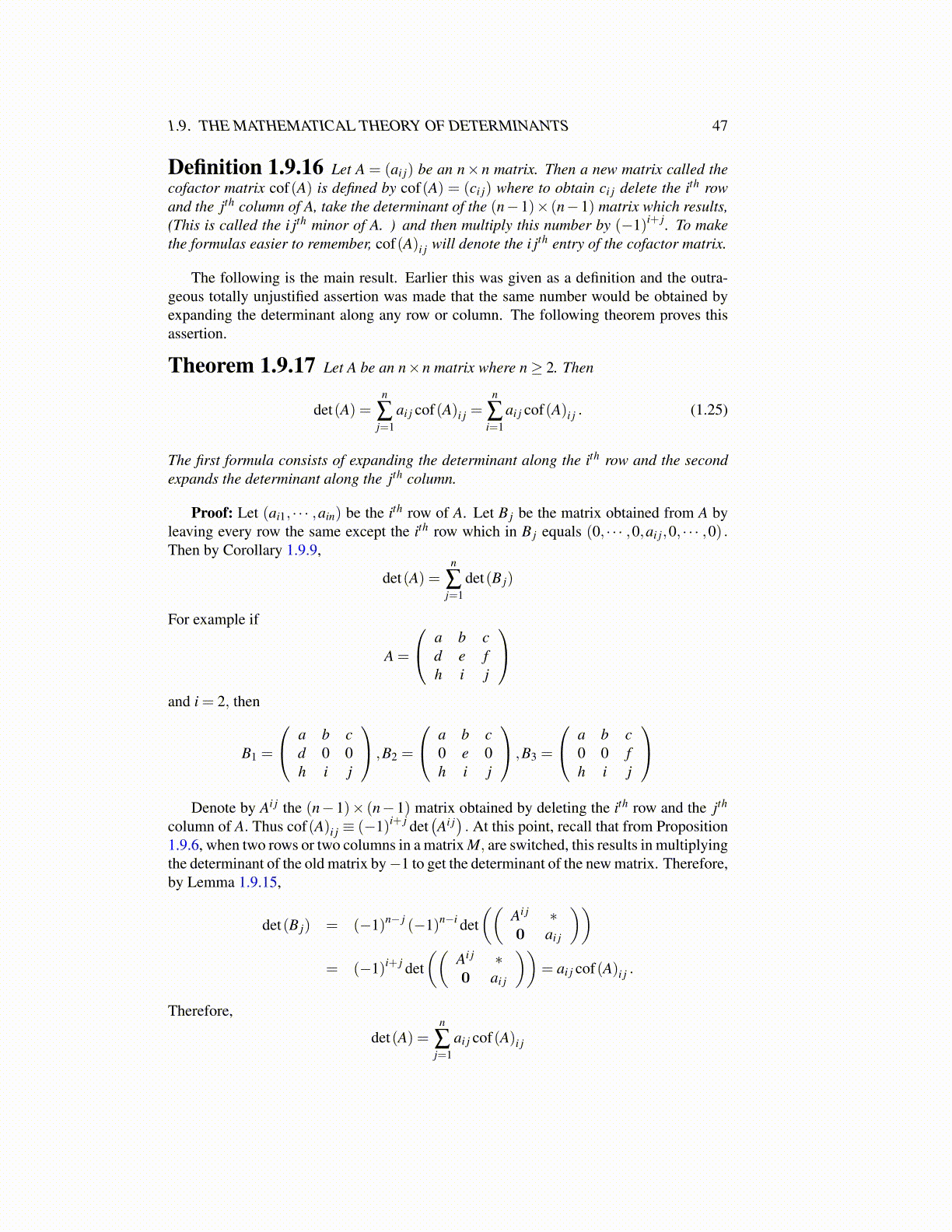
1.9. THE MATHEMATICAL THEORY OF DETERMINANTS 47
Definition 1.9.16 Let A = (ai j) be an n× n matrix. Then a new matrix called thecofactor matrix cof(A) is defined by cof(A) = (ci j) where to obtain ci j delete the ith rowand the jth column of A, take the determinant of the (n−1)× (n−1) matrix which results,(This is called the i jth minor of A. ) and then multiply this number by (−1)i+ j. To makethe formulas easier to remember, cof(A)i j will denote the i jth entry of the cofactor matrix.
The following is the main result. Earlier this was given as a definition and the outra-geous totally unjustified assertion was made that the same number would be obtained byexpanding the determinant along any row or column. The following theorem proves thisassertion.
Theorem 1.9.17 Let A be an n×n matrix where n≥ 2. Then
det(A) =n
∑j=1
ai j cof(A)i j =n
∑i=1
ai j cof(A)i j . (1.25)
The first formula consists of expanding the determinant along the ith row and the secondexpands the determinant along the jth column.
Proof: Let (ai1, · · · ,ain) be the ith row of A. Let B j be the matrix obtained from A byleaving every row the same except the ith row which in B j equals (0, · · · ,0,ai j,0, · · · ,0) .Then by Corollary 1.9.9,
det(A) =n
∑j=1
det(B j)
For example if
A =
a b cd e fh i j
and i = 2, then
B1 =
a b cd 0 0h i j
,B2 =
a b c0 e 0h i j
,B3 =
a b c0 0 fh i j
Denote by Ai j the (n−1)× (n−1) matrix obtained by deleting the ith row and the jth
column of A. Thus cof(A)i j ≡ (−1)i+ j det(Ai j). At this point, recall that from Proposition
1.9.6, when two rows or two columns in a matrix M, are switched, this results in multiplyingthe determinant of the old matrix by−1 to get the determinant of the new matrix. Therefore,by Lemma 1.9.15,
det(B j) = (−1)n− j (−1)n−i det((
Ai j ∗0 ai j
))= (−1)i+ j det
((Ai j ∗0 ai j
))= ai j cof(A)i j .
Therefore,
det(A) =n
∑j=1
ai j cof(A)i j